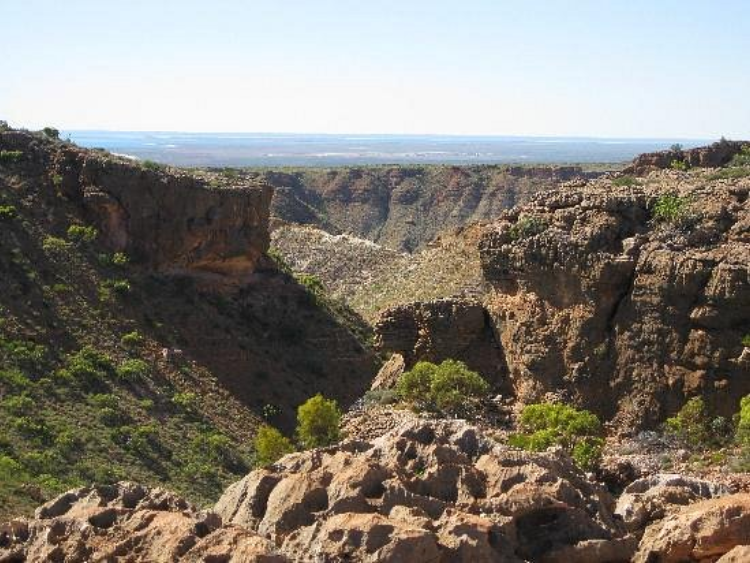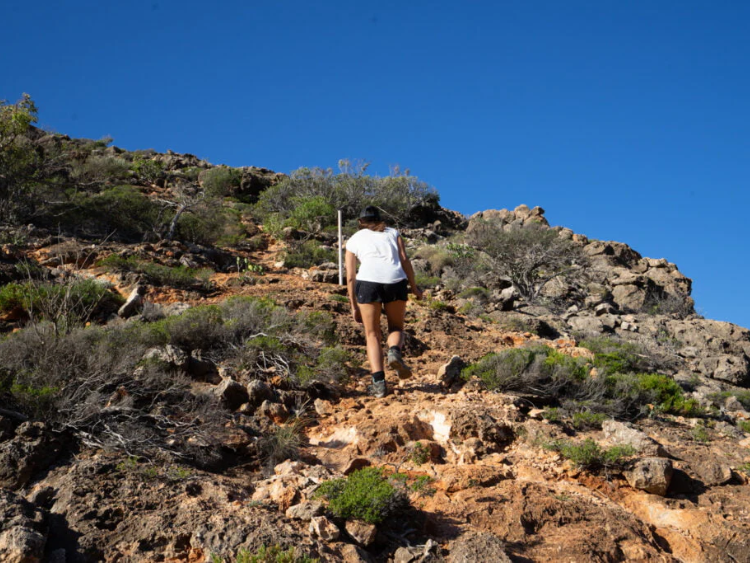
Cape Range National Park is located in Western Australia, near the town of Exmouth on the North West Cape. It's renowned for its stunning coastline, snorkeling, and diving opportunities in Ningaloo Marine Park, which is adjacent to it.
Cape Range National Park covers an area of about 50,581 hectares (125,000 acres) and is situated approximately 1,200 kilometers (745 miles) north of Perth, the capital city of Western Australia. The park is characterized by its rugged limestone ranges, deep canyons, pristine beaches, and vibrant coral reefs along the Ningaloo Coast. It's a haven for nature lovers, offering a wide range of activities such as hiking, wildlife spotting, camping, and swimming with whale sharks and other marine life during the appropriate seasons.

Cape Range National Park was initially gazetted as a national park in 1964, primarily to conserve the unique terrestrial and marine ecosystems found in the region. Over the years, it has become increasingly popular among tourists and nature enthusiasts due to its stunning landscapes, rich biodiversity, and recreational opportunities, particularly snorkeling and diving in Ningaloo Marine Park. The park's establishment has played a crucial role in preserving the pristine environment of the North West Cape for future generations to enjoy and appreciate.

Cape Range National Park was not "invented" by a single individual; rather, it was established through governmental processes in Australia. The decision to create the national park was likely the result of collaboration between various stakeholders, including government officials, conservationists, and local communities. The park's establishment would have involved legislative actions, land acquisitions, and management planning to protect the natural and cultural heritage of the North West Cape region.

Cape Range National Park is named after the prominent geographical feature of Cape Range, which forms the backbone of the park. The cape itself is a rugged limestone ridge that runs parallel to the coastline of the North West Cape in Western Australia. This cape extends for approximately 120 kilometers (75 miles) from north to south and reaches heights of up to 314 meters (1,030 feet) above sea level. The name "Cape Range" reflects the distinctive geological formations and topography of the area, which includes deep gorges, towering cliffs, and expansive plains.




Cape Range National Park offers a variety of hiking trails that cater to different skill levels and preferences, making it an ideal destination for hiking enthusiasts. Here are some reasons why it's great for hiking lovers:
1. Diverse landscapes: The park boasts a diverse range of landscapes, including rugged limestone ranges, deep canyons, pristine beaches, and coastal cliffs. Hiking through these varied environments provides hikers with ever-changing scenery and terrain to explore.
2. Scenic viewpoints: Many hiking trails in Cape Range National Park lead to scenic viewpoints overlooking the Indian Ocean, Ningaloo Reef, and the surrounding coastline. These vantage points offer stunning panoramic views that reward hikers for their efforts.
3. Wildlife encounters: Hiking in the park provides opportunities to encounter a variety of wildlife, including kangaroos, wallabies, emus, reptiles, and a myriad of bird species. Observing wildlife in their natural habitat adds an extra dimension to the hiking experience.
4. Remote wilderness experience: Cape Range National Park is relatively remote and less visited compared to other popular national parks in Australia. Hiking trails in the park offer a sense of solitude and immersion in nature, allowing hikers to disconnect from the hustle and bustle of daily life.
5. Accessibility: The park features a network of well-maintained hiking trails ranging from short, easy walks to longer, more challenging treks. This accessibility ensures that hikers of all fitness levels can enjoy exploring the natural beauty of the area.
Cape Range National Park offers a rewarding hiking experience amidst stunning landscapes, abundant wildlife, and a sense of adventure that appeals to hiking enthusiasts.





While Cape Range National Park can be hiked year-round, the best time to visit may depend on individual preferences and considerations such as weather, wildlife sightings, and crowd levels.
1. **Dry Season (April to October)**: This period is generally considered the best time for hiking in Cape Range National Park. The weather is cooler and more comfortable, with lower chances of rainfall. Wildlife sightings, including kangaroos, wallabies, and various bird species, are also more common during this time. Additionally, the dry season coincides with peak tourist season, so visitors can expect more facilities and services to be available.
2. **Wet Season (November to March)**: Hiking during the wet season can still be enjoyable, but it comes with some considerations. The weather is hotter and more humid, and there's a higher chance of rainfall, which can make trails muddy and slippery. However, this time of year also brings lush vegetation, blooming wildflowers, and the possibility of witnessing dramatic thunderstorms. It's important to check weather forecasts and trail conditions before embarking on hikes during the wet season.
Ultimately, the best time to hike in Cape Range National Park depends on personal preferences and priorities. Some hikers may prefer the cooler, drier conditions of the dry season, while others may appreciate the vibrant landscapes and potential wildlife sightings during the wet season. Regardless of the time of year, visitors should always come prepared with plenty of water, sun protection, sturdy footwear, and respect for the natural environment.